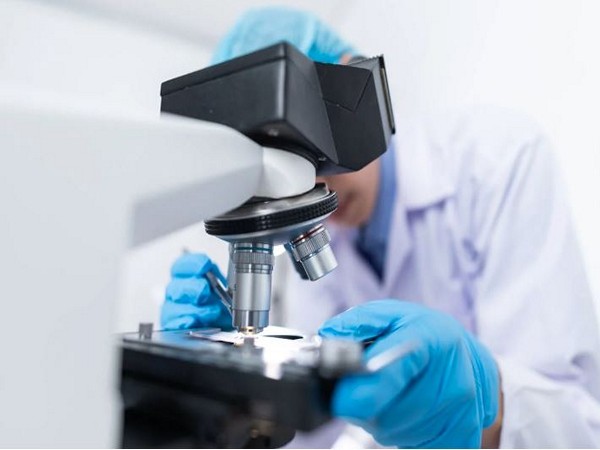England [UK], December 20 (ANI): For the first time, researchers have identified at least three unique subtypes of a rare type of bone cancer, potentially transforming clinical trials and patient care.
A University of East Anglia-led research project has been able to use advanced mathematical modelling and machine learning called “Latent Process Decomposition” to categorise patients with osteosarcoma into different subgroups using their genetic data. Previously, all patients would be grouped together and treated using the same protocols, which has very mixed outcomes.
While genetic sequencing has previously helped to uncover different subtypes of other cancers, like breast or skin cancer, for which those patients then receive targeted treatment personalised to their cancer subtype, it has been much harder to do this with osteosarcoma – a cancer that starts in the bone and typically affects children and teenagers.
Lead author Dr Darrell Green, of UEA’s Norwich Medical School, said: “Since the 1970s osteosarcoma has been treated using untargeted chemotherapy and surgery, which sometimes results in limb amputation as well as the severe and lifelong side effects of the chemotherapy.
“Multiple international clinical trials investigating new drugs in osteosarcoma have been deemed to have ‘failed’ over the last 50 plus years.
“This new research found that in each of these ‘failed’ trials, there was a small response rate (around five to 10 per cent) to the new drug, suggesting the existence of osteosarcoma subtypes that did respond to the new treatment.
“The new medicines were not a total ‘failure’ as was concluded; rather, the drugs were not successful for every patient with osteosarcoma but could have become a new treatment for select patient groups.
“We hope that in the future, grouping patients using this new algorithm will mean successful outcomes at clinical trial, for the first time in over half a century.
“When patients can be treated using targeted drugs specific to their cancer subtype, this will facilitate a move away from standard chemotherapy.”
The search for kinder, more targeted treatments for osteosarcoma is an important area of focus for Children with Cancer UK.
In 2021, funding was awarded by the leading childhood cancer charity to the team at UEA to investigate innovative ways to treat osteosarcoma.
Dr Sultana Choudhry, Head of Research at Children with Cancer UK, said: “Investing in pioneering research programmes is integral to driving forward our vision of a world where every child and young person survives cancer.
“We invest our fundraising into science because we’ve seen how research can make a significant difference in the survival chances of every child.
“By funding groundbreaking research, we are not only advancing scientific knowledge but finding gentler, more effective treatments for our youngest and most vulnerable cancer patients.
“Our hope is that the outcomes of this research project will improve the diagnosis, treatment and long-term care for young cancer patients.”
The survival rate for osteosarcoma, a type of bone cancer, has stagnated around 50pc for the past 45 years. This is mainly because the different subtypes of osteosarcoma are not yet fully understood, as well as how the immune system around the tumour affects it, or what causes the cancer to resist treatment or spread to other parts of the body.
Scientists are yet to identify the key biological markers that could help predict a patient’s outlook or how they will respond to treatment. These gaps in knowledge are preventing progress in improving survival rates.
Previously, researchers have tried to predict different types of osteosarcoma by using certain computer methods, which suggests that there are distinct subtypes of the cancer.
While this was an important step forward, this doesn’t fully account for the fact that each osteosarcoma tumour can be very different from one part to another.
These models also assume that each tumour can be neatly placed into one specific group, even though tumours are usually made up of many different kinds of cancer cells.
This variation within a tumour makes it harder to accurately predict how the cancer behaves or responds to treatment.
In this study, researchers used a more advanced method called Latent Process Decomposition (LPD), which takes into account the differences within individual tumours.
Unlike earlier methods, LPD looks at the tumour as a mix of hidden patterns in gene activity. These hidden patterns represent different “functional states” of the tumour, and each state has its own specific gene expression pattern.
The LPD method figures out how many of these patterns are needed to describe a particular tumour.
The research uncovered three osteosarcoma disease subtypes, one of which was found to respond poorly when treated with the standard chemotherapy drug combination called MAP.
By grouping patients based on these patterns, doctors could make more informed decisions about treatment.
Researchers acknowledged that key limitations of the study include a small dataset for the LPD model development, and the incomplete clinical data in the validation cohort.
Access to tissue and linked clinical data is particularly challenging for osteosarcoma due to the rarity of cases, limited biopsy material and the extensive chemotherapy-related damage present in post-treatment samples.
Despite these challenges, the LPD method proved to be reliable, as it identified consistent subgroups of osteosarcoma across four different sets of independent data.
Like any machine learning tool, the results get better as more data is added. (ANI)
Disclaimer: This story is auto-generated from a syndicated feed of ANI; only the image & headline may have been reworked by News Services Division of World News Network Inc Ltd and Palghar News and Pune News and World News
HINDI, MARATHI, GUJARATI, TAMIL, TELUGU, BENGALI, KANNADA, ORIYA, PUNJABI, URDU, MALAYALAM
For more details and packages











